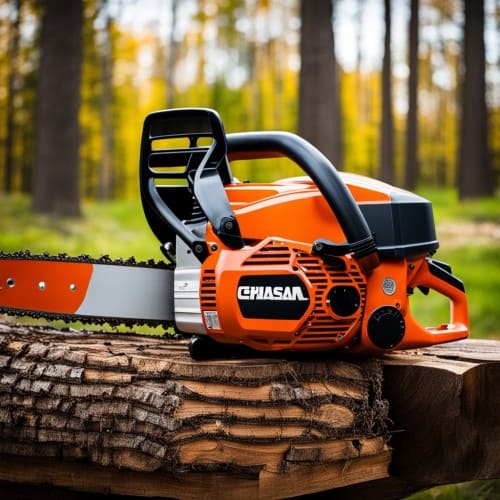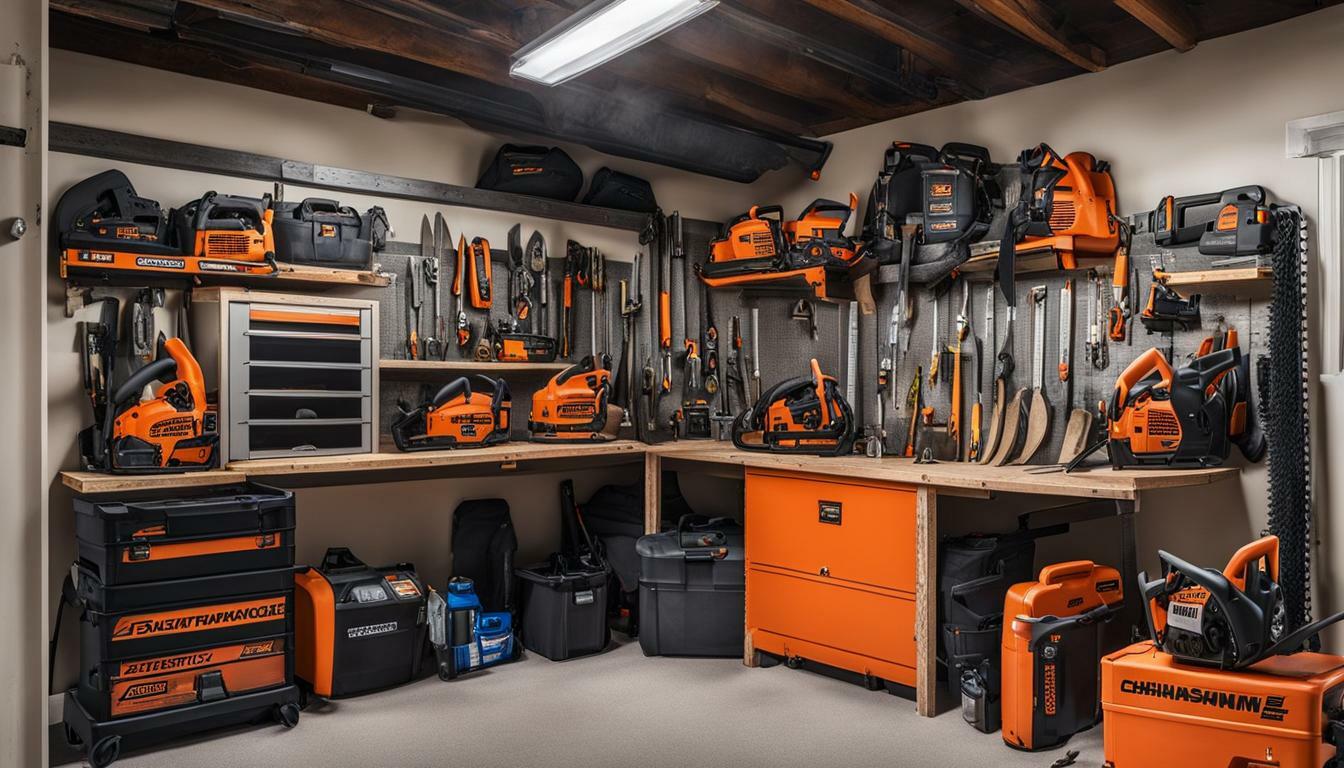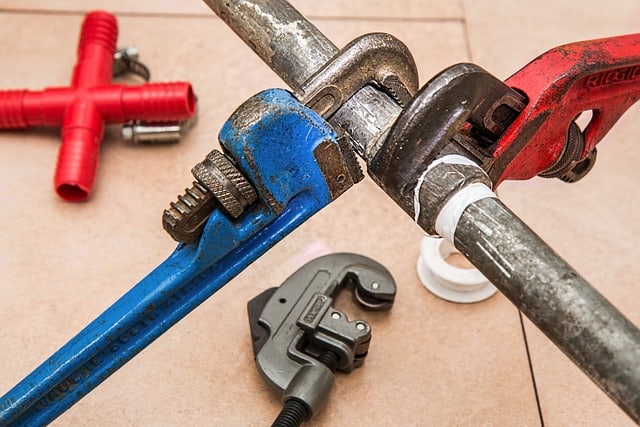Learn How to Store a Chainsaw so It Doesn’t Leak Oil
If you own a chainsaw, you know how important it is to keep it well-maintained to ensure its longevity. One key factor in chainsaw maintenance is proper storage. By learning how to store a chainsaw so it doesn’t leak oil and make your tool last longer.
Key Takeaways:
- Storing a chainsaw properly can simplify maintenance and prolong its lifespan.
- Preparing the chainsaw for storage involves draining the oil and inspecting the chain and bar.
- Choosing the right storage location is crucial to prevent oil leaks.
- Emptying the fuel tank and using a fuel stabilizer can prevent leakage and oil contamination.
- Proper chainsaw storage includes positioning it correctly, protecting the bar and chain, and using a dust cover.
how to store a chainsaw so it doesn’t leak oil – steps
Preparing the Chainsaw for Storage

Before storing your chainsaw, it’s important to properly prepare it to prevent leaks and ensure it functions correctly the next time you use it.
The first step in preparing your chainsaw for storage is to drain the oil. Begin by placing the chainsaw on a flat, level surface and unscrewing the oil filler cap. Carefully pour the oil into a container, being mindful not to spill it.
Next, clean any sawdust or debris from the chainsaw to prevent clogs and damage during storage. Use a soft brush to clean the exterior and a compressed air duster or a blower to clean the chainsaw’s cooling fins, air filter, and carburetor.
Finally, inspect the chain and bar for any signs of damage or wear. Replace any worn or damaged parts, which could lead to oil leaks or other malfunctions.
Choosing an Appropriate Storage Location
Where you store your chainsaw can significantly impact its performance and longevity. Choosing the right storage location is crucial to prevent moisture buildup, temperature extremes, and other environmental factors that can cause damage to your tool.
Firstly, it’s best to store your chainsaw in a dry location, away from any moisture or humidity. This is because excess moisture in the air can lead to rust formation, which can damage the chainsaw’s internal components. A dry and well-ventilated area is ideal for chainsaw storage.
When considering a location, it’s also important to keep in mind the temperature extremes that your tool may be exposed to. High temperatures can cause the chainsaw’s parts to expand, while low temperatures can cause them to contract, leading to mechanical stress and damage. Therefore, it’s best to avoid storing your chainsaw in areas that are too hot or too cold.
One way to control moisture and humidity levels is to use a dehumidifier or moisture absorber in your storage area. These devices can help regulate the air, preventing rust and moisture buildup in your chainsaw.
Choosing an appropriate storage location, ensuring moisture control, and considering temperature factors can help keep your chainsaw in optimal condition, prevent oil leaks, and prolong its lifespan.
Emptying the Fuel Tank
Before storing your chainsaw, it’s essential to empty the fuel tank to prevent fuel leakage and potential engine damage. Here’s how to do it:
- Start by running the chainsaw until the tank is empty.
- Next, remove the fuel cap and pour the remaining fuel into a suitable container.
- If the fuel has been in the tank for more than a month, it’s best to dispose of it properly.
Alternatively, you can use a fuel stabilizer to help keep the fuel fresh for longer periods. Follow the manufacturer’s instructions for the correct amount to use.
Once the tank is empty, run the engine for a few seconds to ensure there is no leftover fuel in the carburetor or fuel lines. This simple step will go a long way in preventing any potential fuel leakage during storage.
Storing the Chainsaw

Once you have properly prepared your chainsaw for storage, it’s time to choose an appropriate storage position. Proper storage is crucial in preventing oil leaks and damage to your chainsaw.
The best position to store your chainsaw is on its side, preferably the opposite side of the carburetor. This position ensures that oil won’t leak into the carburetor, which can cause damage to the engine when you start the chainsaw next time.
Before storing your chainsaw, protecting the bar and chain is essential. You can do this by applying a light oil coating to the chain and bar to prevent rusting and wrapping them with a clean cloth or specialized cover.
In addition to protecting the bar and chain, it’s vital to keep your chainsaw clean by covering it with a dust cover. The dust cover will prevent debris and sawdust from entering the engine, which can cause damage to the chainsaw.
Always store your chainsaw in a dry, well-ventilated area, away from extreme temperatures and humidity. Following these guidelines, you can store your chainsaw correctly and prevent oil leaks.
Maintenance Tips for Long-Term Storage
Proper maintenance during storage is essential to ensure your chainsaw stays in good condition. Here are some tips to keep in mind:
- Lubricate the chain: Before storing your chainsaw, apply oil to prevent rust and dryness. This will also ensure the chain is properly lubricated when you use the chainsaw again.
- Regular inspections: Even when not in use, inspecting your chainsaw periodically for any damage or wear is important. Check the chain and bar for any signs of wear or damage, and inspect the fuel and oil lines for cracks or leaks.
- Drain the carburetor: If you plan to store your chainsaw for an extended period, consider draining the carburetor to prevent any fuel from evaporating and leaving behind residue.
- Keep it clean: Clean your chainsaw thoroughly before storing it, removing any debris or sawdust that may have accumulated. This will prevent buildup that may clog the carburetor or affect the chainsaw’s performance.
By following these maintenance tips, you can learn how to store a chainsaw so it doesn’t leak oil remains in top shape while in storage, and is ready to use when you need it.
Conclusion
Storing a chainsaw properly is essential to prevent oil leaks and prolong its lifespan. By following our step-by-step guide, you can simplify maintenance and keep your chainsaw in excellent condition. Remember to prepare your chainsaw for storage by draining the oil, cleaning debris or sawdust, and inspecting the chain and bar for any damage or wear.
Choosing the right storage location is also important. Keep your chainsaw in a dry, well-ventilated area, away from extreme temperatures and humidity. Emptying the fuel tank and using a fuel stabilizer can prevent fuel leakage and further damage to your chainsaw.
When storing your chainsaw, position it correctly to avoid oil leakage and protect the bar and chain. Use a dust cover to prevent dust and debris from entering the engine. Finally, perform periodic maintenance to keep your chainsaw in excellent working condition, such as lubricating the chain, checking for leaks, and scheduling regular inspections.
By taking these steps, you can Understand how to store a chainsaw so it doesn’t leak oil
and is always ready to use when needed. Remember to consult your chainsaw’s manual for manufacturer-specific instructions, and always handle your chainsaw with care. Happy sawing!
FAQ
How often should I store my chainsaw?
You should store your chainsaw whenever it is not used for an extended period, such as during the winter months or if you won’t use it for several weeks.
Do I need to drain the oil before storing my chainsaw?
It is important to drain the oil from your chainsaw before storage. This helps prevent oil leaks and keeps the chainsaw in good condition.
Can I store my chainsaw in a shed or garage?
Yes, you can store your chainsaw in a shed or garage as long as it is a dry and well-ventilated area. Avoid storing it in damp or humid locations.
Should I use a fuel stabilizer when emptying the fuel tank?
Using a fuel stabilizer is recommended when emptying the fuel tank. It helps prevent fuel degradation and protects the engine from damage.
How should I position the chainsaw for storage?
It is best to store the chainsaw on its side to prevent oil leakage. Make sure to secure the bar and chain and use a dust cover to keep dust and debris out of the engine.
How often should I perform maintenance on my stored chainsaw?
It is recommended to perform maintenance on your stored chainsaw every few months. This includes lubricating the chain, checking for leaks, and conducting regular inspections.






